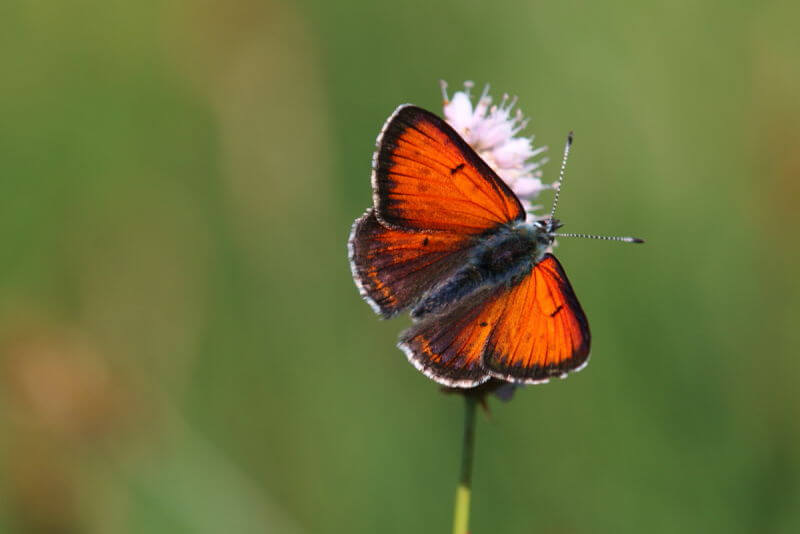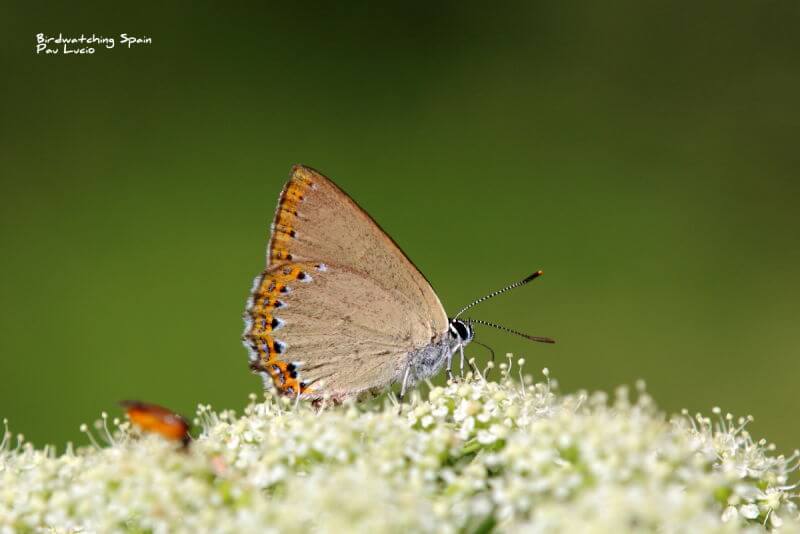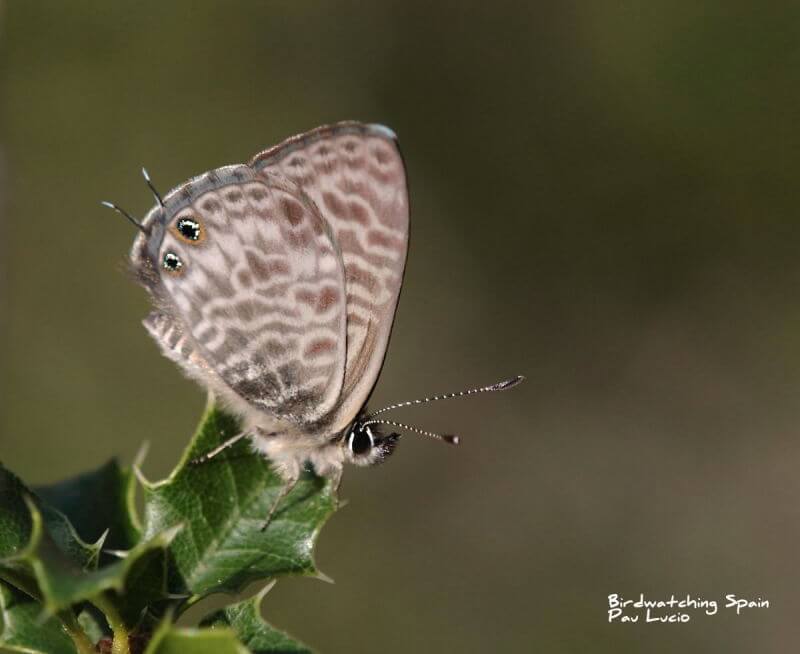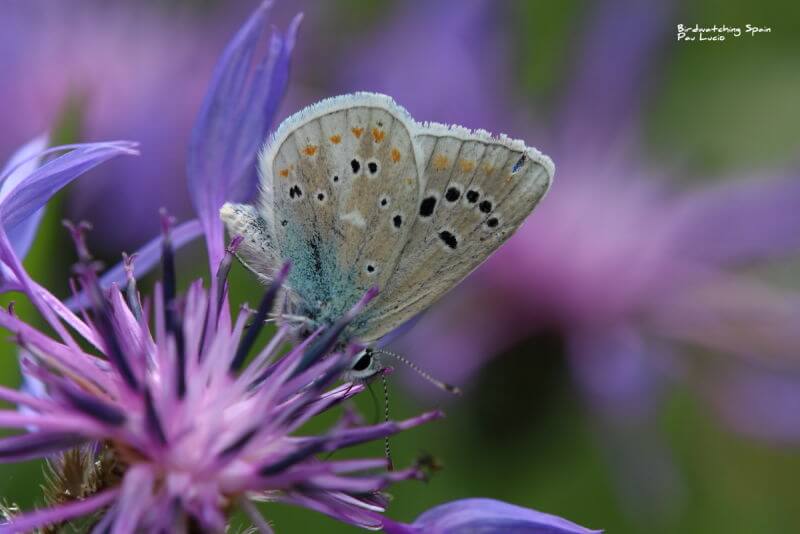Birdwatching and wildlife tours in Spain
Wildlife report in the Cantabrian Mountains
I am regular visitor of the Cantabrian mountains and Picos de Europa. As a result, I have spent many summers searching for its wonderful wildlife. Here you can read my last wildlife trip report in the Cantabrian Mountains.
We usually run two types of wildlife tours. In June, we start leading natural history tours mainly consisting of orchids, butterflies, birds, etc. and during September, the itineraries are more focus on mammals: wildcat, Iberian wolf and brown bear.
Wildlife report in the Cantabrian Mountains
Dates: June 25-July 1st
Day 1. Santander airport-Boca de Húergamo
The group arrives on time to Santander airport and soon we are in the minibus heading to our accommodation in Boca de Húergamo. After 2 h 40 min journey, everyone is willing to stretch the legs before dinner. We walk around the surroundings of the hotel watching Serins, Black redstarts and two White storks in the nest. Mike finds a Hummingbird-hawk moth in a honeysuckle. After that, we stroll down to the river when Pau finds an adult Dipper feeding three grown-up chicks. On the way back, we take another path to see the beautiful Lilium martagon.
Day 2. Crémenes. Wildlife report Cantabrian mountains
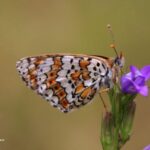
We set off at 9:00 driving South to the village of Crémenes. Soon we see the first orchids: Lizzard, Pyramidal and Woodcock orchids. Sadly, the Sawfly orchids are almost over. Black kites, Griffon vultures and Common buzzard patrol the sky and the nearby farms looking for some carcass. As the temperature warms up, we start finding the first butterflies: Clouded yellow and Berger’s clouded yellow, Spotted fritillary, Small tortoiseshell and a Heath fritillary which finds Edward’s T-shirt a good place to land.
Just few of us, manage to see an Iberian chiffchaff which keeps jumping from branch to branch. After that, we continue walking along a small stream watching a Beautiful damselfly and few more species of butterflies: Green-vein white, Adoni’s blue, Essex and Small skippers. Not far from there, we add two more species of orchids: Small-tongue orchid and Green-winged orchid, the last one almost over.
Mediterranean habitat in the lowlands: birds and butterflies in Cantabria
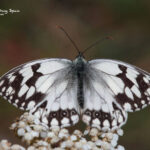
We get back to the vehicles and drive a short distance to a picnic area. As we are enjoying our salads and local cheese, Jenny gets her eyes in two birds which turn to be an Egyptian vulture and a Peregrine falcon. The grass in the picnic area hasn’t been cut yet and therefore, there are lots of gorgeous butterflies such as Iberian Marbled white, Dark-green and Cardinal fritillaries.
Once we have finished lunch, we drive for 20 minutes to our next location. Here the landscape is a bit more Mediterranean, and so are the birds! We enjoy great views of the colourful Bee-eaters and a Red-back shrike. Sadly, just Pau see a Short-toed eagle after it vanishes behind the hill. In addition, we all see a Melodious warbler singing on the top of a bush and an Iberian green woodpecker flying from tree to tree. Some new butterflies include Silver-studded, Long-tailed and Little blue, Large and Oberthür’s grizzled skipper.
Day 3. Fuente Dé. Alpine birds and flora in the Cantabrian Mountains
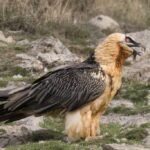
Today we have a long drive (1 h 40 min) to Fuente Dé. Once we get there, Pau rushes to get the tickets so the waiting time is just 30 min. Meanwhile, we wander around watching a beautiful Firecrest and a Coal tit. In addition, there are large numbers of Painted lady which have been pushed to Europe as a result of the heat wave a few days ago.
Once we get out of the cable car, we soon find some alpine plants. For instance, Trumpet gentian and the Pyrenean toadflax. We continue walking and taking photos of “cheeky” Alpine chough and we are rewarded with the sight of a Lammergeier. That is fantastic! It is even possible to see the numbers in the wing tags as most of the birds in this area are part of a restocking programme. During the winter 2020, a pair of Lammergueiers have mate and laid an egg. This is the first breeding attempt in many decades. Let’s hope they succed!
Wallcreeper: The bird that looks like a butterfly!
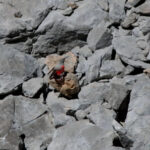
We keep moving as we have more birds to see, but before we get to the spot, Pau sees a Southern Chamois resting among the boulders. Once we get to the “wall”, we wait for 30 min until two Snow finches show up. After that, we stop in another area to scan the walls, finding a Wallcreeper, that is great! It keeps hiding just showing for seconds.
While we wait to get better views of the Wallcreeper, Pau finds two approachable Alpine accentors. Finally, the Wallcreeper remains on view and all the group gets good sight of this stunning bird. The breeze carries the butterflies away and makes difficult to spot any of them, just finding a Common blue and a Common Brassy ringlet.
After some refreshments in the bar, we take the cable car back and set off to the hotel.
Day 4. Valdeón valley. Flowers ans butterflies in the Cantabrian Mountains
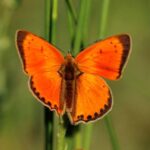
Our first stop today is to add an interesting bird to our list, the Citril finch. In the same spot, we add two more species of orchids: Heath spotted orchid and Dactylorhiza incarnata. After that, we continue driving along the beautiful Valdeón valley and stop near a stream. As we get off the vehicle, we get a nicely perched Yellowhammer and a Linnet. The meadows are packed with flowers such as the endemic Digitalis parviflora, the beautiful Linaria elegans, Trollius europaeus and the purple Jasione laevis just to name few. The hillsides are pink as the heath (Calluna vulgaris) is in full bloom. There are some interesting butterflies like the Scarce Swallowtail, Scarce copper and Turquoise blue.
We keep driving admiring the stunning views from Pandetrave pass, the towering Picos mountains are right in front of us. Our next stop is in Posada de Valedón, where we have coffee and take a stroll along the village. We watch a family of Marsh tits picking insects in the dung and not far from there a beautiful male Common redstart stands out. In a hillside we find a nice Flax (Linum narbonense).
After eating the picnic, we spend the rest of the afternoon wandering around the meadows and we add a new species of orchid, the Dark red Helleborine. There were also Man orchids but already in seedpods. The meadows are full of butterflies: Pearly and Chestnut heath, Iberian marbled white, Glanville fritillary and Short-tailed blue to name few. John and Pau find in different corners of the meadows two Owl flies (Ascalaphidae) which turn to be two different species.
Day 5. Lois valley. Butterflies in the Cantabrian Mountains
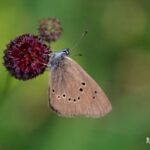
Today, we head South to visit the valley where Pau lives. Our first stop is by the road to see a group of blooming Butterfly orchids and some Robust marsh orchids that were starting to come into flower.
We take a stroll along the river finding the path covered by Butterworts and Heath-spotted orchids. Soon we see the first species of butterflies: Ringlet, a Southern brown argus and a sunbathing Spanish purple hairstreak. Suddenly, a large butterfly catches our eyes, an Apollo butterfly! It lands on a Cephalaria allowing us fantastic views! On the way back to the minibus we add Chalk-hill blue and Spanish gatekeeper.
Orchids in Crémenes
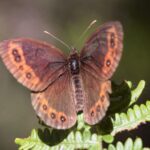
A short stop in the town of Crémenes reveals Common twayblade and Marsh helleborine. The surprise comes when we see a Black vulture, an uncommon species around here.
We set off to Lois where we have a coffee stop before visiting the “smoking house” and the cathedral. The smoking house is a remarkable building from a traditional and cultural point of view. Until the 90’s it was inhabited. The way locals used to isolate the straw roof and to warm the house was by burning wood inside the building and allowing the smoke to get out through the roof and walls. As there were no chimneys in the facilities, the houses used to have a thick layer of soot covering both, walls and roof. Living in the Cantabrian mountains used to be tough!
The cathedral is also worth visiting it. It is a pretty large cathedral considering the tiny size of the village. Moreover, this extraordinary building is a sign of a past when the rights of grazing and the cattle transhumance meant an important income for the villagers.
After lunch, we spend a couple of hours looking for butterflies in the meadows. Amanda’s blue, Champman’s ringlet and White admiral are added to the list. It is getting a bit too hot, so we decide to drive back to the hotel. On the way back, we make a short detour to see a roosting Tawny owl.
Day 6. Border with Asturias. Amphibians and dragonflies
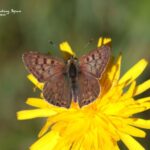
In our last full day, we set toward Asturias. We visit a couple of lagoons hoping to find some Odonata and amphibians. Soon, we find a Four-spotted chaser, Common bluet, Ruddy darter and quite a lot of Western willow spreadwing. In terms of plants, we find a single Dactylorhiza insularis, the lovely Viola cornuta, Arctostaphylos uva-ursi, Valeriana montana and Yellow gentians which are starting to flower. A Booted Eagle and a Tree pipit in full song are seeing. Pau does well when he finds two different amphibians: Stripless tree frog and an Iberian frog. We also see some day flying moths like the Speckled footman and Isturgia flamula.
Our next stop is to have lunch. It is a beautiful sunny day, so we take a stroll and find a worn-out Camberwell beauty. In a nearby meadow, Pau shows us a boggy area where we see the scarce Dusky large blue, one of the rarest and more threatened butterflies in Spain. Other butterflies seen include Cleopatra, Meadow fritillary and Sooty copper among others.
Day 7. Boca de Huérgamo-Santander. Wildlife report to the Cantabrian Mountains
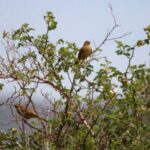
As the departure is in the afternoon, Pau has planned a couple of stops on the way to the airport. The first one is South of Guardo in an open plateau. Our first birds of the day are Spotless starlings and a couple of Cirl buntings. In addition, Black-veined whites, Great banded graylings and Gatekeepers seems to be everywhere! Mick finds a pair of Whinchats perched. Pau spots a Tawny Pipit and later we see a Hopooe looking for grubs near a dung pile.
Our picnic and last stop are in the marshes of Santander. A fantastic restoration project and a nice area to walk around. Here we see some rafts where Common Terns are breeding and a large colony of Cattle egrets.
Whit no more time, we drive the short distance to the airport and say goodbye to the group, what a beautiful wildlife holiday!
Should you have any question, please do not hesitate to contact us or visit our tour calendar.
Wildlife report to the Cantabrian Mountains. Pau Lucio
